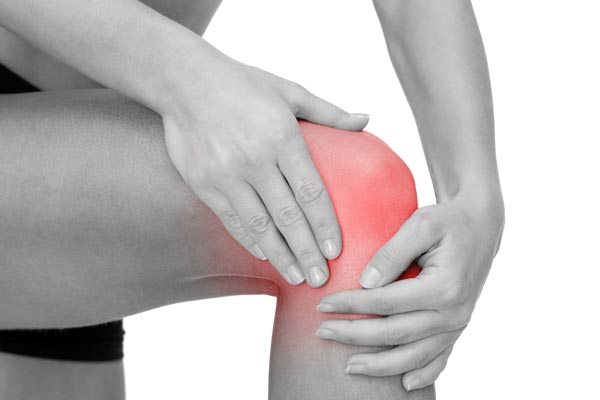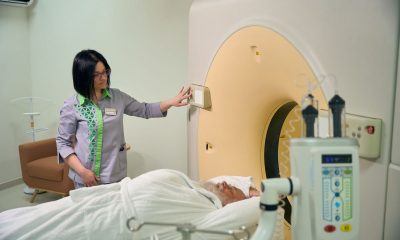Sciatica
Can Knee Pain Be Caused By Sciatica

When a person experiences sciatica, they can experience shooting or burning pains in their lower back. The pain may radiate down the leg or to the feet. The affected leg can be either the front or the back. Since sciatica usually affects one leg, the pain will likely occur in the same leg as the sciatic nerve.
What Helps Knee Pain From Sciatica?
Sciatica is a condition with compression or irritation of the sciatic nerve. This causes pain in the knee and sometimes pain in other parts of the body. It typically affects one leg, but it can affect both legs. This condition is often accompanied by muscle tightness.
A doctor will want to know what caused your sciatica symptoms before treating your knee pain. It may be a symptom of other medical problems. For example, you may have a runner’s knee, which results from friction between your kneecap and the thigh bone. While patellofemoral pain is not caused by sciatica, it can result in a hot or burning sensation in your knee.
Sciatic nerve pain treatment aims to relieve pain and restore mobility. Simple self-care measures like using an ice pack can help reduce inflammation and pain. Other options include applying a frozen bag of vegetables wrapped in a towel. These can be applied several times a day to reduce swelling and pain. In addition, hot packs can also be useful for reducing pain. You should apply them for about 20 minutes and rotate them for the best results.
Physical therapy is also an option for sciatica pain relief. Physical therapy involves stretching and strengthening the muscles surrounding the spine. In addition, doctors may prescribe nonsteroidal anti-inflammatory drugs. In some cases, patients will experience numbness and a pins and needles sensation in their legs.
How Long Does Sciatica Knee Pain Last?
The typical recovery time from sciatica is between four and eight weeks, but it can last up to four months. Treatment is focused on controlling pain, keeping patients active, and minimizing inflammation. Chronic inflammation is linked to various health problems, including cardiovascular disease, cancer, and type 2 diabetes. For this reason, it’s important to visit a doctor for a diagnosis and treatment plan.
Sciatica symptoms typically begin in the lower back and radiate down one leg and often into the foot. An injury may cause these symptoms to the sciatic nerve or an underlying condition. For example, improper lifting techniques can cause a slipped disc, which puts pressure on the sciatic nerve. While the pain from sciatica can go away after a couple of weeks, it may reoccur in the meantime, so treatment must be tailored to your specific needs.
The best way to reduce pain and increase mobility is to continue to exercise your affected leg. You may try applying an ice or heat pack to reduce inflammation and swelling. If you can’t tolerate ice packs, you can try a bag of frozen vegetables wrapped in a towel. Hot packs are also helpful and can be applied to the affected area several times daily.
Can Pinched Nerve cause Knee Pain?
A pinched nerve is a compression on a nerve caused by structures surrounding it. This can result in pain in a part of the body supplied by the nerve, including the knee. It can also damage the nerve and impair its functioning. Although the condition typically affects nerves in the back, it can occur in any body part. The condition is also known as entrapment or compression.
A pinched nerve is often accompanied by pain that is more severe than normal. Some pinched nerve symptoms are mild and can go away on their own over time. However, some patients may experience recurring pain or even permanent nerve damage. Treatment for pinched nerves should include rest and pain medications, such as acetaminophen and ibuprofen.
Other common conditions that can cause knee pain include back issues and spinal problems. These issues can affect the nerves that control the leg muscles and the bladder or bowel function. These spinal nerves also control the inside and outside of the foot, so if one nerve becomes pinched, the other is likely to suffer. These nerves can lead to unnatural tilting of the big toe joint, which can lead to bunions. Exercises to relieve the pressure on these spinal nerves may help to ease the pain.
What Does Nerve Pain In Knee Feel Like?
The symptoms of nerve pain in the knee can vary in intensity and cause a great deal of pain. In some cases, patients may experience numbness, tingling, or weakness. It is important to seek medical attention if you have any of these symptoms. A board-certified physician can diagnose your condition and provide treatment options.
Nerve pain in the knee may be caused by many different things, including a herniated disc. A herniated disc puts excessive pressure on the sciatic nerve and may cause weakness in the leg. Degenerative disc disease, on the other hand, is caused by the natural degeneration of the discs in the legs and can cause inflammation and pain.
A doctor can prescribe over-the-counter pain relievers and exercise plans to help you manage the pain. They can also prescribe ice and heat to reduce inflammation. Some doctors also recommend physical therapy for sciatica patients. These treatments are often temporary and don’t cure the problem, but they can help improve your quality of life.
The symptoms of sciatica can range from mild to debilitating. The pain can be caused by degenerative discs, a bulging disc, or a compression of one of the sciatic nerve roots. When the sciatic nerve is pinched, it transmits pain to other body parts, including the knee. This type of pain is called referred pain because the pain signals go through several interconnected sensory nerves.
Is Walking Good For Sciatica?
Walking helps to stretch and strengthen your muscles, but it can also aggravate sciatica. Proper walking techniques require proper posture and balance. Core abdominal muscles help minimize pressure on your spine and avoid injuries. Avoid jerky and abrupt movements while walking. It’s also important to avoid overdoing walking sessions, as this can further aggravate symptoms. Instead, pace yourself by paying attention to your body’s signals.
The best way to prevent sciatica is to follow your physician’s recommendations. Your doctor may suggest resting or physical therapy. They may prescribe an exercise program for you if the pain is severe. If you’re pregnant, consult your doctor before starting an exercise program.
Slowly increasing your walking routine is ideal for people with sciatica. Start by walking for a few minutes at a time and gradually increase your stride length. Don’t increase too much at once, as this can irritate the sciatic nerve and cause pain. Walking for at least five minutes a day can help alleviate sciatica pain.
Proper posture can also help reduce pain. While walking, you should try to maintain a level posture and keep one foot on the ground. This will help you engage your core muscles and keep your back in a neutral position.
Does Drinking Water Help Sciatica?
Drinking water reduces sciatica symptoms and slows the condition’s progression. It also helps rehydrate intervertebral discs, which are important in maintaining the health of the sciatic nerve. If these discs become dehydrated, the pressure on the sciatic nerve increases.
In addition to drinking water to reduce the pain, you should also try eating foods rich in fiber. These foods contain antioxidants that help reduce the pain associated with sciatica. Eating foods rich in vitamins B and A can also reduce pain associated with sciatica. Some people also find that green peas, spinach, bananas, and dark leafy vegetables are beneficial in reducing sciatica. It is also helpful to avoid eating animal products. Clinical nutritionists recommend cutting out these products for two weeks.
People suffering from sciatica must drink at least 100 ounces of water daily. Drinking two to three cups of green tea each day can also help. In addition, adding turmeric and ginger to your food can help to ease the pain. A good source of B-Vitamins can be found in spinach and green peas.
What Should You Not Do With Sciatica?
The pain caused by sciatica can be exacerbated by spinal flexion. This condition can also be caused by poor posture. It is also important to avoid stretching exercises, as these can worsen the pain. Instead, try to find ways to stretch your lower back without aggravating your sciatica.
If experiencing sciatica pain, avoid prolonged inactivity and rest until your symptoms improve. You can use cold packs to ease your discomfort. Frozen peas wrapped in a towel are also an effective solution. In some cases, patients may be prescribed over-the-counter medications. If the symptoms persist, your doctor may recommend physical therapy.
When lifting heavy objects, you should avoid bending forward at the waist. This can increase pressure on your lower back and squeeze a disc pricking your sciatic nerve. Avoid doing this by learning the proper technique of lifting objects using your legs and hips. Also, avoid prolonged sitting, which can lead to muscular imbalances in your back and can cause inflammation.
Another common irritant is wearing high heels. High heels can cause pain and make your sciatica symptoms worse. They can also cause your pelvis to tilt, which puts pressure on the sciatic nerve.
Conclusion
If you’re experiencing acute or chronic knee pain, scan your body for discomfort in other areas, even if it seems completely unrelated. Buckling of the knee when you’re standing or walking Dull ache, sharp pain, paresthesia, or feeling of warmth in the knee, which can be in the front, back, or side. Given the size of this nerve, it’s not surprising that it can become irritated and cause pain. It has two roots in the lumbar spine and three in the sacrum, so many areas of your body can be affected.
Within the lumbar spine, as tissues degenerate, they can compress. Narrowing of the spinal canal in the lower back is also known as lumbar spinal stenosis. However, chronic sciatica is a lifelong condition that will not resolve independently without a specialist’s intervention. Sciatica causes neck pain and lower back pain.

Doctor Osvaldo Pepa, Neurosurgery Service Physician at Hospital San Martin, La Plata, Argentina. I graduated last November 16, 1984 with a Medical Degree at the Universidad Nacional de La Plata. The Medical Board of La Plata, District 1, licensed me as a Neurosurgeon in 1990. I hold a Provincial and National License and an active member of the Neurosurgery Society of La Plata, World Ozone Therapy Federation, and Inter American Society of Minimally Invasive Surgery.

























